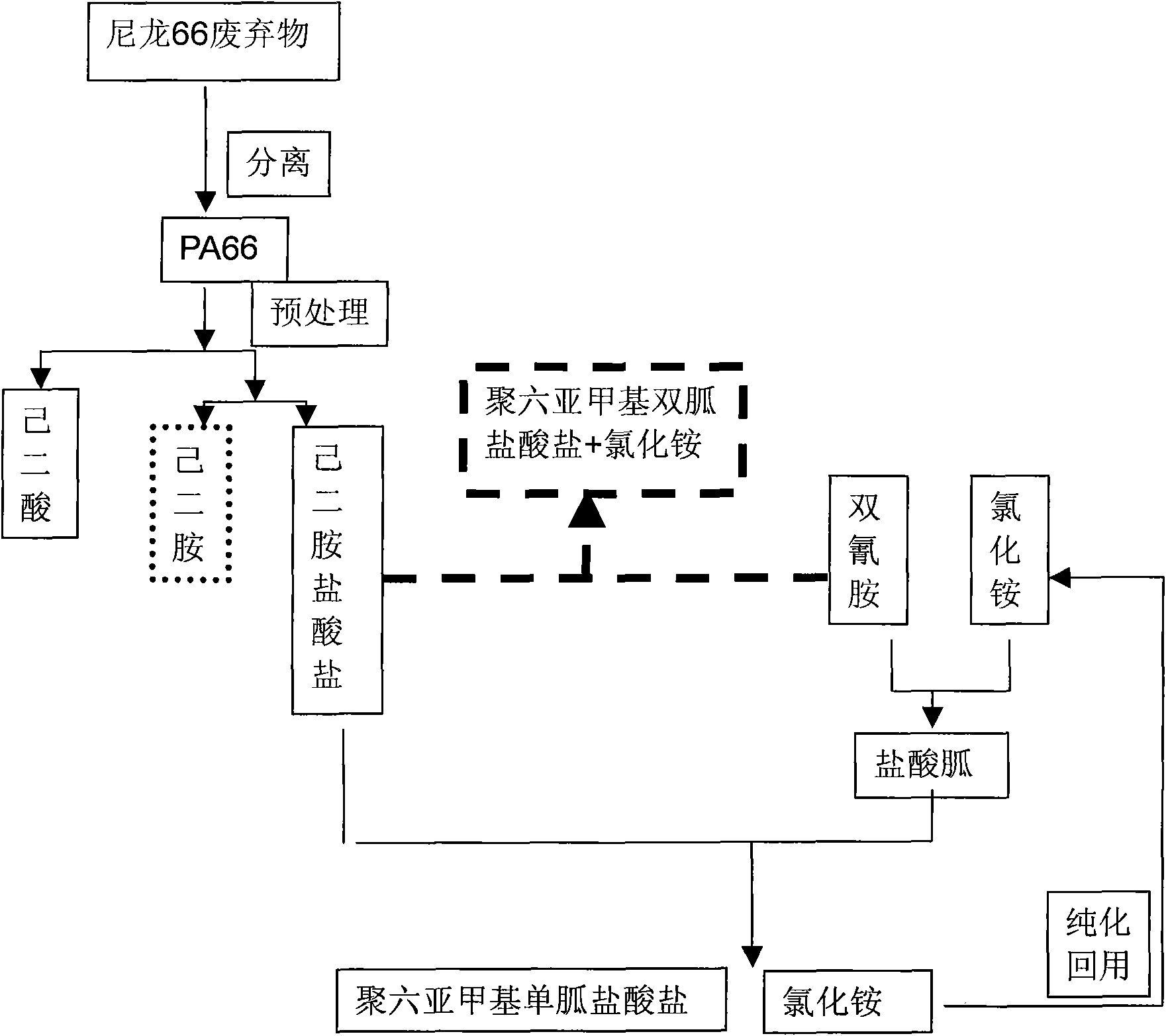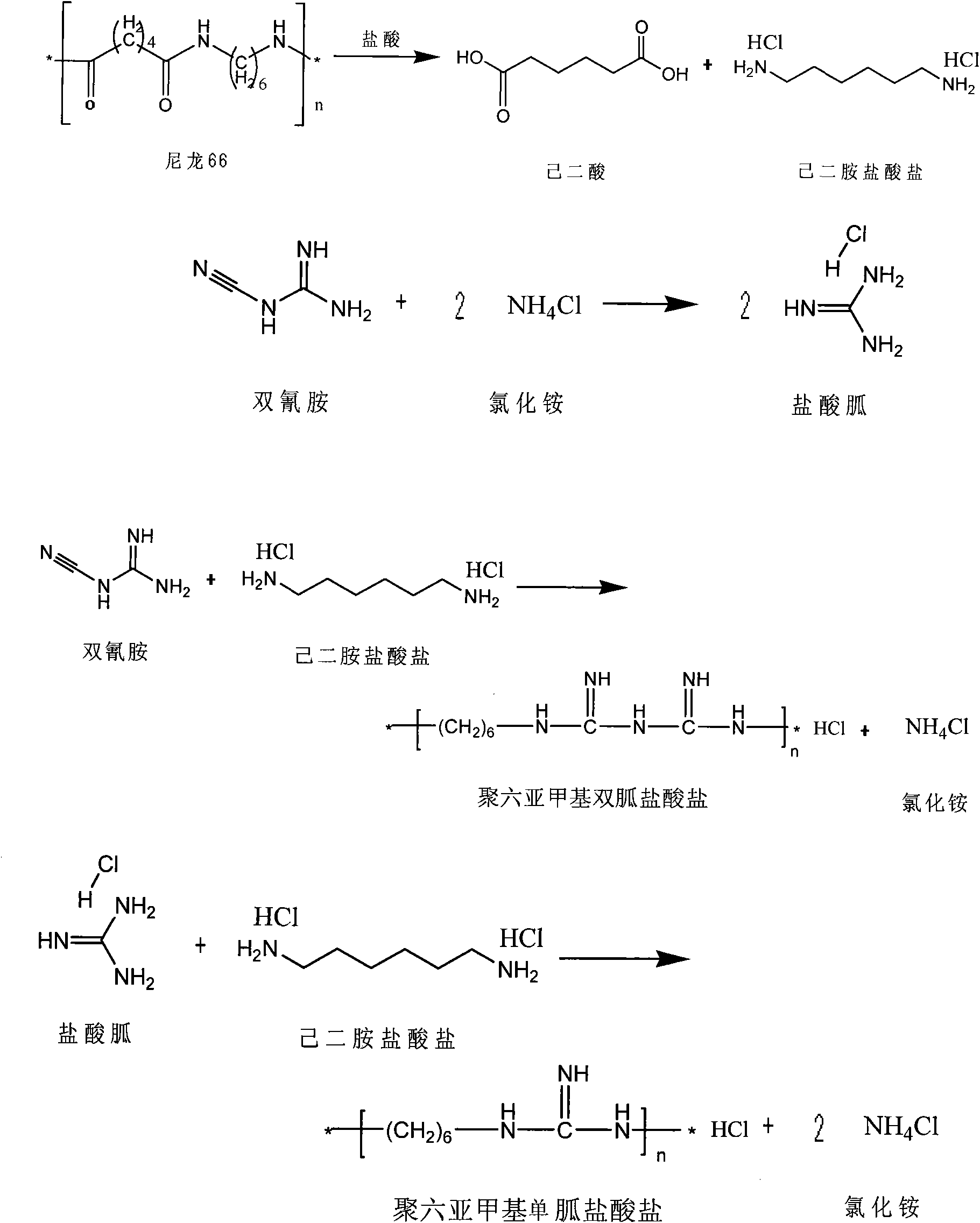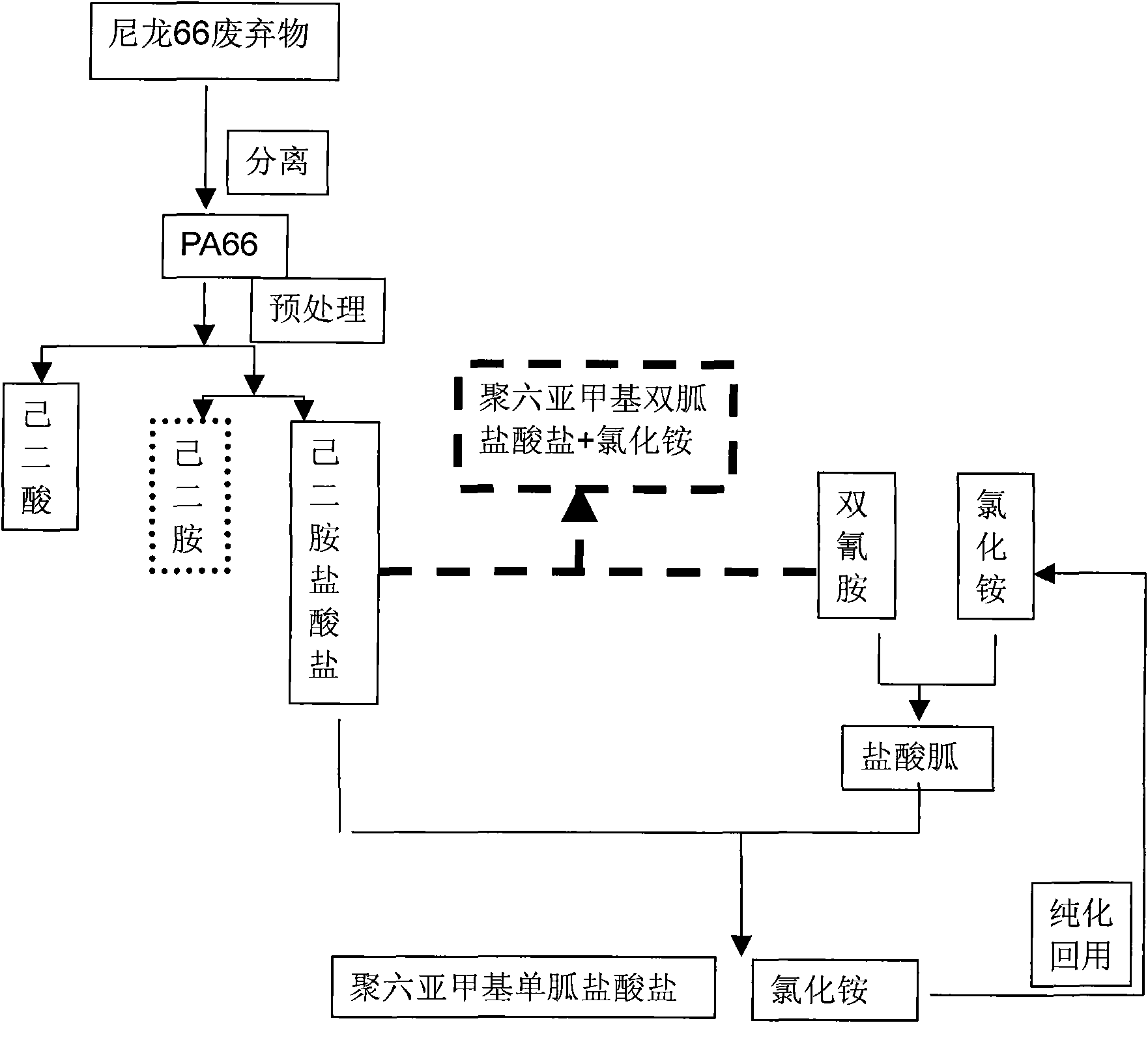Method for producing adipic acid, hexamethylenediamine hydrochloride and polyhexamethylene (di)guanidine chloride from nylon-66 through depolymerization
A technology of hexamethylenediamine hydrochloride and polyhexamethylene monohydrate, which is applied in the field of industrialized production of polyhexamethylene monoguanidine hydrochloride, can solve the problem of difficult separation, poor production efficiency, and the technology in other documents or patents. No issues have been reported
- Summary
- Abstract
- Description
- Claims
- Application Information
AI Technical Summary
Problems solved by technology
Method used
Image
Examples
Embodiment 1
[0027] (1) Depolymerization section: Add 1500Kg of 30% industrial by-product hydrochloric acid to the reactor equipped with reflux condenser and hydrochloric acid gas absorption device at the top, add 500Kg of water, heat, and add 1000Kg of waste nylon-66 fragments while stirring. The reaction temperature is controlled at 100-110°C, normal pressure, and time is 8 hours, the reaction conversion rate reaches more than 90%, and the acid hydrolysis solution is obtained. The acid hydrolysate is filtered and pressed into the crystallization tank through the coarse filter, and the cooling and crystallization speed is accelerated by pumping air at the top. The liquid entrained in the air pumping process is defoamed and collected in the external screen filter buffer tank, and passed into the jacket Circulate cooling water until the temperature of the crystallization tank drops to 30-40°C. After the crystallization is completed, the crude adipic acid crystals and the crude hexamethylened...
Embodiment 2
[0032] The depolymerization section (1), the adipic acid refining section (2) and the hexamethylene diamine hydrochloride refining section (3) are the same as in Example 1.
[0033] (4) In the polyhexamethylene mono(bi)guanidine hydrochloride preparation section, put the dicyandiamide and ammonium chloride powder with a molar ratio of 1:2 into the reactor, protect it with nitrogen, stir for 25min, and heat up to 180℃ , Stir the reaction for 2 hours, slowly add the hexamethylene diamine hydrochloride powder obtained in the hexamethylene diamine hydrochloride refining section (3), continue the reaction for 5 hours to obtain a mixture of polyhexamethylene monoguanidine hydrochloride and ammonium chloride, While hot, use nitrogen to slowly press the molten reaction liquid into a separation tank containing industrial ethanol, stir well and filter, and distill off the ethanol filtrate of polyhexamethylene monoguanidine hydrochloride under reduced pressure to obtain a light yellow color....
Embodiment 3
[0035] The depolymerization section (1), the adipic acid refining section (2), the hexamethylene diamine sulfate refining section (3), and the polyhexamethylene mono(bi)guanidine sulfate preparation section (4) are the same as in Example 2.
[0036] Add 300Kg of hot water (80±5°C) to the crude ammonium chloride white powder obtained after the above filtration, stir to dissolve and filter, concentrate under reduced pressure and evaporate until crystals just precipitate out, cool, filter, and vacuum dry to obtain 150Kg of refined sulfuric acid Ammonium solid, the yield is over 86%. According to the reaction equivalent ratio, fresh ammonium chloride is appropriately supplemented and reused to the polyhexamethylene mono(bi)guanidine hydrochloride preparation section (4).
[0037] The general molar ratio herein means that the molar ratio is allowed to fluctuate by 10% on the basis of equivalent reaction.
PUM
 Login to View More
Login to View More Abstract
Description
Claims
Application Information
 Login to View More
Login to View More - R&D
- Intellectual Property
- Life Sciences
- Materials
- Tech Scout
- Unparalleled Data Quality
- Higher Quality Content
- 60% Fewer Hallucinations
Browse by: Latest US Patents, China's latest patents, Technical Efficacy Thesaurus, Application Domain, Technology Topic, Popular Technical Reports.
© 2025 PatSnap. All rights reserved.Legal|Privacy policy|Modern Slavery Act Transparency Statement|Sitemap|About US| Contact US: help@patsnap.com



